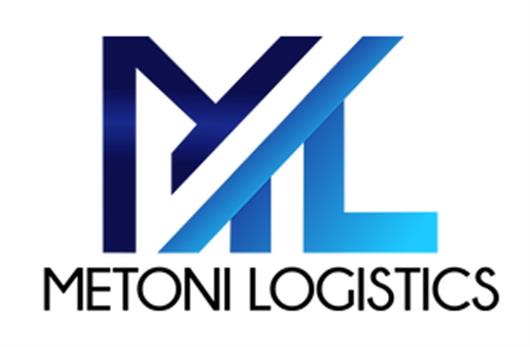 Add My Company
Add My Company
Sign In
A -Z of shipping terms
06-02-2023

Everyday shipping terms are used so often in the industry, but it can be confusing as they are mostly all three letter acronyms, and some can be mostly interchangeable – HBL/SWB for example are both types of house bill and are used similarly.
If you are new to the shipping industry or just want a bit of a refresher, Metoni Logistics have got you covered. Our A-Z of shipping terms will be a useful tool in training or just to have when dealing with your imports and exports so you’re always at the top of your game.
A
ATA – Actual time of arrival. We use this on our notices of arrival and customs information to provide you with accurate information so we can help you to arrange delivery or collection of your shipment more easily. Being able to update our customers on every step of the shipment process is something we take pride in, and we will always endeavour to do so.
ATD – Actual time of departure. We use this on our export notice of departures/shipped on board notices, so you know the exact time and date that a vessel or aircraft has left with your goods on board. It gives you the peace of mind you need to know that your cargo is definitely on board.
B
BAF – Bunker Adjustment Factor
BAF is a charge that is put onto ship operators to compensate for fuel price fluctuations between various regions. It is priced at a set rate that is decided on a monthly or quarterly basis. It is invoiced on a W/M basis so depending on how heavy or big your cargo is will determine how much you pay.
BOL – Bill of Lading
A legal document that provides the full information of the cargo being shipped. It will give the details of the shipper and receiver (consignee), the marks on the shipment (labels etc,) how many packages there are, what the packaging is (boxes, jars, IBCs etc) what the cargo description is and the gross weight and cube of the total shipment. The bills of lading can be original or waybills. This can also be referred to a B/L.
C
CAF – Currency Adjustment Factor
Another surcharge that is charged to shipping operators and passed down the chain to consolidators and forwarders. This charge covers the difference between different currencies like USD and GBP/Euros on the Ocean Freight. Like BAF, it is set at a standard rate at a percentage of the ocean freight.
CFR – Cost and Freight
The first of the Incoterms on our list. This is one of the popular terms to use when shipping goods. It is a prepaid term so the shipper will have paid for the goods to be loaded in a container on board the vessel or aircraft up to the port of arrival. Any charges after the arrival at port will be for the account of the consignee.
CIF – Cost, Insurance and Freight
As per CFR, where the cargo is prepaid up to destination port and the consignee is responsible for any charges once it arrives. The difference between CIF and CFR is that the shipper will take out insurance on the cargo to ensure it is protected for a variety of issues.
D
DAP/DDU – Delivered at Place
Another prepaid incoterm. The shipper prepays the charges from pickup at their warehouse or port of origin right up to a named place at destination. This could be at the unpacking warehouse or the buyer’s warehouse/office. All the consignee has to pay is any VAT and duty charges and any delivery/collection charges if they need it going elsewhere.
DDP – Door Duty Paid
This term is the same as DAP/DDU except for one difference. The duty is prepaid by the shipper. It means that the shipper and consignee have to speak to the freight forwarder first to find out the duty amount and how much it will be or the shipper can be invoiced for duty once the cargo arrives and has been customs cleared.
Deferment
Deferment is the postponement of paying your VAT and any duties for between 2-6 weeks after your cargo gets customs cleared. Most freight forwarders and consolidators have their own deferment and therefore you can use their account to pay VAT and duty charges into. The charge for using a deferment account is normally a set percentage charge of the total VAT and duty amounts.
E
EORI – Economic Operators Registration and Identification Number
A unique number given to businesses who will trade throughout the European Union. It is used by customs authorities to keep a track of shipments that will go in and out of the European Union. It should be included on the commercial invoice and provided to the customs agent who will be completing your customs clearance.
EXW – Exworks
An incoterm that is common for shippers to use for one-off shipments to a consignee. The seller’s responsibility ends once the cargo has been delivered to a named place at origin. This could be the seller’s warehouse, a loading warehouse or the port. The charges for freight and destination charges are for the account of the consignee.
F
FCL – Full Container Load
Full container loads are used by one shipper and one consignee. They are loads where the cargo is a large enough quantity to need a 20’, 40’ or 40’HC container. The shipper will arrange the load of the cargo at their premises ready for transport to the dock. The bill of lading will be show that is a full load container and the consignee is usually responsible for arranging the container to be unpacked at a warehouse at the final destination.
FOB – Free on Board
Our last incoterm on the list. This is another freight collect term where the seller’s responsibility ends as the cargo is loaded on board the vessel. The seller will arrange collection or delivery to the port or loading warehouse and from there, the charges will go forward to the consignee.
H
HBL – House Bill of Lading
A document that is provided by a freight forwarder or NVOCC (non-vessel owning company) stating the receipt of goods and what is being shipped. The term is interchangeable with BOL/Telex release which are also discussed in this list.
L
LOI – Letter of Indemnity
A letter of indemnity is commonly used to indemnify a shipper or carrier against something beyond their control. It is usually used when original bills have been lost in the post and the consignee needs to arrange collection of the cargo. Letters of indemnity have to be agreed by the shipper and shipping agent and they will wait a certain period of time before doing the indemnity.
LoLo – Load on Load Off
LoLo cargo is lifted on and off a vessel with a crane. It is the way containers and large non-vehicle cargo is loaded onto the ship. The cranes are dockside if the vessel is not a LoLo vessel and therefore has its own crane equipment.
N
NOA – Notice of arrival
A notice of arrival is a document provided by the freight forwarder or shipping company to notify a consignee of the arrival of their cargo. It will advise who to contact for customs clearance, any charges due and the details of the shipment. When a shipment is due, it is a good idea to keep an eye out for these arrival notices and make sure you have all the documents you need from the shipper in order to claim the cargo and arrange customs clearance.
P
PSS – Peak Season Surcharge
The Peak Season Surcharge is a fee that is passed down from vessel operators during particularly busy periods of transporting goods. It can happen at different times of the year and the charges can be different depending on the carrier and when their peak season is.
S
Shipping Marks
Shipping marks are placed on the cargo for easy identification at the loading and unloading warehouses. Some countries have strict guidelines as to what they can and cannot accept on the cargo as shipping marks. We recommend making sure the cargo has the gross weight, nett weight and consignee details on and any PO information.
T
Telex Release
A bill of lading can either be express release or originals. If the bills are originals, then the consignee can send one of the originals into the freight company handling their cargo to get the cargo ‘telex released’ meaning they are able to get release of the cargo at the warehouse without handing in the originals.
V
VGM – Verified Gross Mass
This is the total weight of the cargo including packaging and any pallets that are used. It is used to make sure your cargo is properly looked after and stored throughout the whole journey. If the warehouse at the load point has to do this for you, there may be a charge involved. VGM is usually also declared on import and export declarations, so it is important to get it done and checked correctly.
W
W/M – Weight/Measure
Our final term on the list is one of the most commonly used ones. Many charges involved in shipping are based on weight/measure rates. The charges are worked out based on 1000kg/1cbm ratio, so if the cargo is 8000kg/6cbm, it’ll be billed on the weight. It’s important to make sure that you declare your weight and volume correctly on the bills of lading, so your invoice is charged correctly.
This list is not exhaustive, there are plenty of terms used every day in shipping that we might not have discussed here. If you’re confused about terms or need guidance on what certain terms mean, please send us an email or call us to discuss.
For more information on A -Z of shipping terms talk to Metoni Logistics
Enquire Now
List your company on FindTheNeedle.
